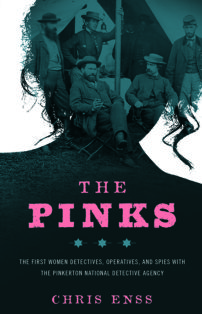1824 – Jessie Ann Benton Frémont, American author and activist, outspoken opponent of slavery, known for her writings about her husband, John C. Frémont, and their lives in the western US (d. 1902)
An Indian In Yosemite
Last chance to enter to win the book
High Country Women: Pioneers of Yosemite National Park
Celebrate the 126th anniversary of Yosemite!
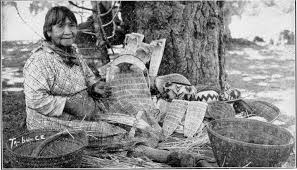
The dark clouds that hovered over a crude trail in Yosemite Valley in May 1899 broke loose with a torrent of rain that nearly knocked Paiute Indian Maggie “Ta-bu-ce” Howard and her fourteen-year-old niece, May Tom, off the rocky path where they walked. Mighty claps of thunder echoed around the majestic granite walls of Yosemite Falls, and huge boulders shook from the sound. A powerful wind charged down the mountain and tossed leaves, twigs, and brush into the air. Maggie and May Tom hurried to an outcropping of craggy rocks and huddled underneath them. Lightning flashed violently, and the wind raged on without ceasing. It was as if the sky just beyond their crude shelter was in an angry pursuit to destroy them.1
As soon as the rain eased a bit, the pair raced toward a grove of trees, and it was there they made camp. The following morning they had planned to travel to their home in Indian Village along the Merced River. In spite of the wind and continual rain, Maggie and May Tom eventually managed to fall asleep. Their uneasy slumber was interrupted sometime in the night by a massive pine tree that blew over on them. May Tom was killed instantly. Maggie’s collar bone was broken; the bones in her right leg were fractured, and her ankles and feet were severely injured.2
When the two didn’t arrive home the evening of the storm worried relatives had gone in search of Maggie and her niece. They were heartbroken by what they saw. May Tom’s mother and brothers took her body back to the valley where they lived, and Maggie was transported to a doctor. He set her bones in casts that extended over most of her frame. She was unable to move until the bones mended in late August. Maggie couldn’t recall anything after the tree hit her, but the lifetime limp she acquired as a result of her injury served as a reminder of the events leading up to the tragedy.3
Naturalist and explorer John Muir referred to the storms that occurred at Yosemite as “not easily borne.” Maggie was in complete agreement. According to the June 3, 1910, edition of the Hayward, California, newspaper the Hayward Daily Review, it is estimated that Maggie “Ta-bu-ce” Howard was born in 1867 at Mono Lake thirteen miles east of Yosemite Valley. She was a Paiute Indian and her name Ta-bu-ce meant “grass nut” or “sweet-root.” Her father, Joaquin Sam or Kosana as his tribe called him, was a medicine man who made frequent trips to Yosemite to gather acorns and pinon nuts. He would bring them home to Maggie’s mother who would grind them into meat to use to make bread. Kosana passed away at the age of eighty while en route home from Yosemite Valley. A snowstorm overtook the group of Indians he was traveling with, and they were unable to make it over the Sierra Mountains before Kosana died from exposure. He was buried near what is now the Yosemite Museum.4
To learn more about Maggie Howard and the other women who helped make Yosemite a National Park read
High Country Women: Pioneers of Yosemite National Park
This Day…
A Bride in Yosemite
Enter now for a chance to win the book
High Country Women: Pioneers of Yosemite National Park
Celebrate the 126th anniversary of Yosemite!
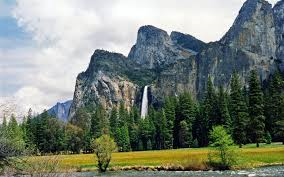
At the turn of the century Yosemite Valley, in particular the area known as Bridalveil Falls, was referred to as the “show place of the Sierras.” Artists from every medium thought the falls cascading down more than six hundred feet of rock wall into the valley to be so beautiful that it was considered selfish for anyone who looked on the splendor of the setting not to share the pleasure with others using whatever talent they were given. Among the many famous guests who visited the most prominent waterfall in the Yosemite Valley were General Ulysses S. Grant, Horace Greely, General William T. Sherman, and Ralph Waldo Emerson. Naturalist John Muir entreated the public to visit the spot often. According to his memoirs he challenged park patrons to “climb the mountains and get their good tidings.” He assured them that “nature’s peace will flow into you as sunshine into trees.”1
It’s not unusual that couples chose the stunning Bridal Veil Falls as the backdrop for their nuptials. The first bride to plan her wedding at the spot was a prominent young woman from Los Angeles. According to the August 6, 1901, edition of the newspaper The Boston Globe, the ceremony was “so incredible it defied description and started a trend in civil unions held at the majestic National Park.” The momentous occasion highlighted in The Boston Globe article was duplicated by hundreds of betrothed couples in the early 1900s. “With a mighty altar and the generous diapason of an incomparable waterfall furnishing the melody of a bridal march Miss Annie Ripley of Los Angeles and Henry C. Best of San Francisco were wed in the valley a few days ago,” The Boston Globe article continued. “It was the first marriage ceremony performed in Yosemite, and for solemnity and picturesqueness it was surpassingly notable.”2
One hundred guests of the bride and groom were present and walked with them over trails and under trees to the place where the water crashed upon the rocks beneath the towering cliffs on either side of Bridalveil. “The day was a superb one and the scene one of matchless beauty,” The Boston Globe article continued3
“Miss Ripley was prettily attired in a mountain costumes and the man who was to be made her husband had set aside the customary garments and wore camping attire as well. Their look was fitting for the setting.
To learn more about Annie Ripley, Elizabeth Fry, and Sara Haight
and the other women who helped make Yosemite a National Park read
High Country Women: Pioneers of Yosemite National Park
Coming Soon!
This Day…
A Consort in Yosemite
Enter now for a chance to win the book
High Country Women: Pioneers of Yosemite National Park
Celebrate the 126th anniversary of Yosemite!
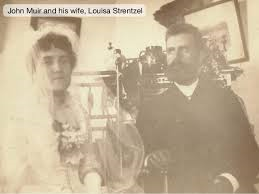
The light from a spectacular full moon spilled into the windows of the parlor at the Strentzel Ranch near the town of Martinez in the Alhambra Valley in California. The room was filled to overflowing with well-dressed guests, owners and operators of farms in the area and their wives and family. All eyes were on Louisa “Louie” Wanda Strentzel, a petite, thirty-one-year-old woman playing a piano. No one spoke as the melancholy tune she offered filled the air. Louie played well and had a voice to match the exceptional talent demonstrated. Midway through the mesmerizing performance, forty-year- old John Muir, an explorer and naturalist from Wisconsin, quietly entered the home and stood in the shadow of the door leading into the parlor. With the exception of a quiet greeting from Strentzel family friend Mrs. Jeanne Carr, his presence went largely unnoticed.1
John’s eyes were transfixed on Louie. She had high cheek bones, a firm mouth, and clear, gray eyes. He gazed at her with an unfathomable look of admiration and longing. At the conclusion of her song the gathering enthusiastically applauded. John followed suit as he ventured into the light. It was June 1, 1878.2
This was not the first time he had seen Louie. The two had been introduced in 1874 in Oakland at a meeting of homesteaders and farmers organized by her father, horticulturist Dr. John Strentzel. John and Louie had many friends in common, and many agreed they would make the perfect couple. Jeanne Carr had tried in vain to arrange a date between John and Louie, but John always had travel plans that conflicted with a rendezvous. In April 1875 Jeanne sent Louie a message letting her known that the “chronic wanderer,” as John was often referred to, could not be distracted from an expedition to the Cascade Range in Siskiyou County, California. “You see how I am snubbed in trying to get John Muir to accompany me to your house this week,” Jeanne wrote Louie. “Mount Shasta was in opposition and easily worth the choice.” Jeanne would not be defeated, however. She was convinced the two had so much in common their paths were bound to pass eventually and forever.3
To learn more about Florence Louisa Strentzel Muir
and the other women who helped make Yosemite a National Park read
High Country Women: Pioneers of Yosemite National Park
This Day…
A Rebel in Yosemite
Enter now for a chance to win the book
High Country Women: Pioneers of Yosemite National Park
Celebrate the 126th anniversary of Yosemite!
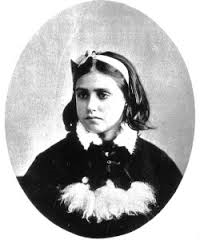
Fifteen-year-old Gertrude Hutchings sat on the edge of her sister Florence’s bed, crying. Florence, a pretty girl of seventeen with long, dark hair lay motionless under a mountain of blankets. A massive purple and black bruise on the side of her right cheek was the only color on her slender, pale face. Her eyes were closed and her hands were folded across her chest, her breathing was labored and slow. Her grandmother, Florantha Sproat, dabbed the teenager’s forehead with a cool, moist cloth, kissed her forehead, and then stepped away waiting for the girl to respond.1
Florence did not move. She would never move again. She died on September 26, 1881. Family and friends that surrounded her wept and wondered aloud to one another how someone so young and vibrant could be gone from them. “Yosemite Valley was diminished in a sense by her passing,” one of Florence’s teachers said at the young girl’s funeral. “She was a rarity and added to the setting’s beauty.”2
Florence “Floy” Hutchings was the first white child born in Yosemite. Her parents, James Mason Hutchings, a businessman, farmer, and promoter of Yosemite National Park, and artist Elvira Sproat, welcomed their daughter into the world on August 24, 1864. The precocious, inquisitive child was the first child for the couple who lived in a log cabin close to Yosemite Falls.3
In addition to exploring the land in which James Hutchings and John Muir would help preserve, James was a homesteader in the north section of Yosemite where he raised fruit trees, strawberry plants, and various livestock, including horses. He also owned an inn which Florence’s mother and he ran. Elvira was a reluctant innkeeper; she preferred painting, reading poetry, writing, and playing music. Her mother, Florantha, assumed the responsibility of caring for Floy and the two other children the Hutchings had: Gertrude, a blue-eyed, fair-haired girl born in October 1867, and William a cheerful boy born in July 1869 who suffered from a spinal deformity.4
Despite her best efforts, Florantha had a difficult time raising Floy to be a proper young lady. Even as a small child she cared little for frilly dresses, curly hair, and ribbons. She was a tomboy and enjoyed collecting insects and toads, hiking, camping, and riding horses. She would often disappear for hours at a time to explore the valley and mountains. Although her mother would be furious with Floy for taking off without letting anyone know where she was going, the young girl refused to change and was seldom sorry for making her mother [and grandmother] worry.5
To learn more about Florence Hutchings
and the other women who helped make Yosemite a National Park read
High Country Women: Pioneers of Yosemite National Park

